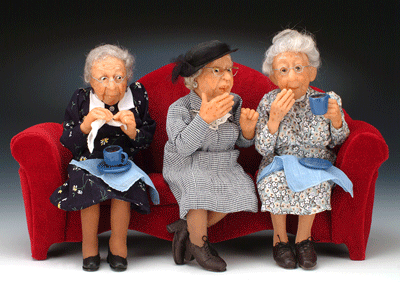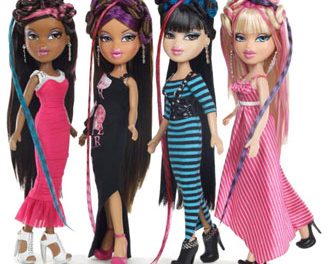Last Friday, I was working at home and had my handy-dandy radio on, as usual. Because my job is pretty solitary, I like having the hum of conversation in the background. Lately, the talk-radio shows have been abuzz with negative insights, and there’s a sense of gloom and doom shrouding the conversations. So, imagine my surprise, when I suddenly heard the program host begin to debate the virtues and vices of Monster High and dolls in general. Not only did this topic perk up my ears, but it also mobilized my fingers to start dialing into the show. And, lucky for me, I made it on the air and took part in a very interesting look at dolls and their roles in a non-doll-collector venue.
The host of the hour was remarking on the “shave or not to shave” dilemma of Clawdeen Wolf, the werewolf offspring in Mattel’s Monster High. Ironically, I had just opined about this topic and a trio of other ridiculous vinyl brouhahas in my “Delilah Dilemma” blog. After phoning in and explaining my role in the doll industry, I spoke on air about the “Nair Wolf” column that spotlighted Clawdeen, and then answered some questions about dolls being appropriate or inappropriate based upon their “sexuality.” (I always put this in quotes, mind you, because all of these offending offerings are pieces of vinyl, resin, porcelain, or an amalgam of clay and plastic. Truly, the bimbo behavior is in the eye and mind of the beholder.)
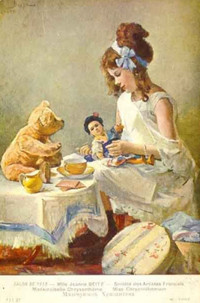 Exasperated by morality monitoring, the deejay excitedly asked me, “What should little girls play with? Should they just be changing diapers on baby dolls, playing ‘let’s make dinner’ on fake stoves, and learning to greet their husbands with a beer when they get home from work?” I answered with the first thought that streaked into my head: “No, that would be the last thing this group would endorse. It would be too ‘pre feminist.’ That would be just as upsetting to them as having the Clawdeen doll exfoliate to catch guys.”
Exasperated by morality monitoring, the deejay excitedly asked me, “What should little girls play with? Should they just be changing diapers on baby dolls, playing ‘let’s make dinner’ on fake stoves, and learning to greet their husbands with a beer when they get home from work?” I answered with the first thought that streaked into my head: “No, that would be the last thing this group would endorse. It would be too ‘pre feminist.’ That would be just as upsetting to them as having the Clawdeen doll exfoliate to catch guys.”
So, he pressed, what would a critic on “doll play” want? If dolls who are flirty and fashionable, or ones that are too stodgy and domestic, violate modern-day conventions, what is left that’s either not too provocative/demeaning or too stereotypical/subservient?
I answered, “Maybe little girls should start playing with GI Joe dolls or little green army men. We can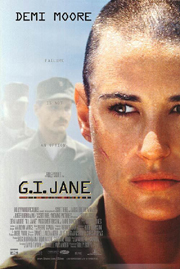 just sell them as GI Janes, and girls can prep for the future draft.” (Mind you, I am not supporting this change in frontline treatment. I was simply riffing on a recent army memo that recommended “more women in combat situations.” Nor was I shilling for action figures cranked out in the image of Demi Moore, a onetime doll collector with whom I share an “interesting” history, but that’s for another day and blog.)
just sell them as GI Janes, and girls can prep for the future draft.” (Mind you, I am not supporting this change in frontline treatment. I was simply riffing on a recent army memo that recommended “more women in combat situations.” Nor was I shilling for action figures cranked out in the image of Demi Moore, a onetime doll collector with whom I share an “interesting” history, but that’s for another day and blog.)
Oh, my goodness, what a can of worms opened up then!
For the next 20 minutes, my off-the-cuff remark became the fodder of the hour. Since little girls once used baby dolls to become model mamas, should they now play with fighter pilots and Navy SEALs to become admirable admirals? Well, should they?
The folks who phoned in were very vocal about the notion of women in combat positions, and were upset that girls could be trained for that promotion. The mishmash of M*A*S*H* and Mattel was truly amazing, and even the host had to say it was a really unexpected hour that went off into a direction he never imagined.
The bottom line was that the parents (who buy the toys) don’t have any problems with the toys they are ferrying into their daughters’ toy boxes. They are quite happy with the dolls’ appearances, costumes, backstories, and themes. They wish groups would stop issuing ridiculous studies on what dolls are “healthy” and which dolls are “destructive.”
Like one lady who called in stated, “I think my daughter can tell the difference between reality and fantasy. She knows that these dolls are all part of make-believe. You don’t see her trying to invite SpongeBob to her birthday party. She knows he’s fake!”
How true that is. Think tanks that spend weeks and months investigating pop culture trends and societal shakeups very often miss the point. It doesn’t matter what the tag says on a doll’s wrist or what her packaging says on the front, back, or side, the person in charge of playing is . . . the child!
I can’t count how many times I find my children sending the Hannah Montana doll on a secret mission to save the earth, or having Buzz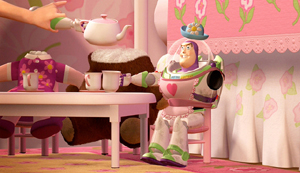 Lightyear over for dinner, or setting up a concert performance in Rapunzel’s plastic tower that features a Camp Rock doll as lead singer, backed up by Wedding Day Ken in a tux, Dog Groomer Barbie, and a giraffe!
Lightyear over for dinner, or setting up a concert performance in Rapunzel’s plastic tower that features a Camp Rock doll as lead singer, backed up by Wedding Day Ken in a tux, Dog Groomer Barbie, and a giraffe!
Young children who PLAY with dolls might be told the basics of what the doll represents, but that ticket is quickly cast aside as they immerse themselves into their self-penned dreamworlds. We can’t expect kids to play by the rules, and to follow a marketing manager’s or an advertising copywriter’s script of what a doll symbolizes and what a doll needs to be.
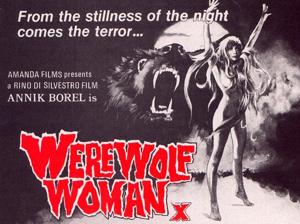 The whole furor around Clawdeen Wolf involves the fact that she “shaves and waxes” to make herself look pretty for boys and presentable at the beach. That’s the crux of the matter. Of course, Clawdeen isn’t real; she doesn’t actually grow hair; and her biography is fictional.
The whole furor around Clawdeen Wolf involves the fact that she “shaves and waxes” to make herself look pretty for boys and presentable at the beach. That’s the crux of the matter. Of course, Clawdeen isn’t real; she doesn’t actually grow hair; and her biography is fictional.
The question shouldn’t be: To shave or not to shave? With apologies to Shakespeare,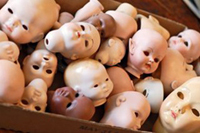 it should be: To dream or not to dream, that is the question. Are children allowed to expand their minds with any and all dolls within their grasp, or should parent-watch advocacy groups continue to snoop around the toy aisle? Bringing a mature mind-set to the world of play can only lead to squabbles, name-calling, and bad feelings. It’s a grown-up PR playground where no one can win. If this keeps up, we’re all going to take our toys and go home to NOT play.
it should be: To dream or not to dream, that is the question. Are children allowed to expand their minds with any and all dolls within their grasp, or should parent-watch advocacy groups continue to snoop around the toy aisle? Bringing a mature mind-set to the world of play can only lead to squabbles, name-calling, and bad feelings. It’s a grown-up PR playground where no one can win. If this keeps up, we’re all going to take our toys and go home to NOT play.


